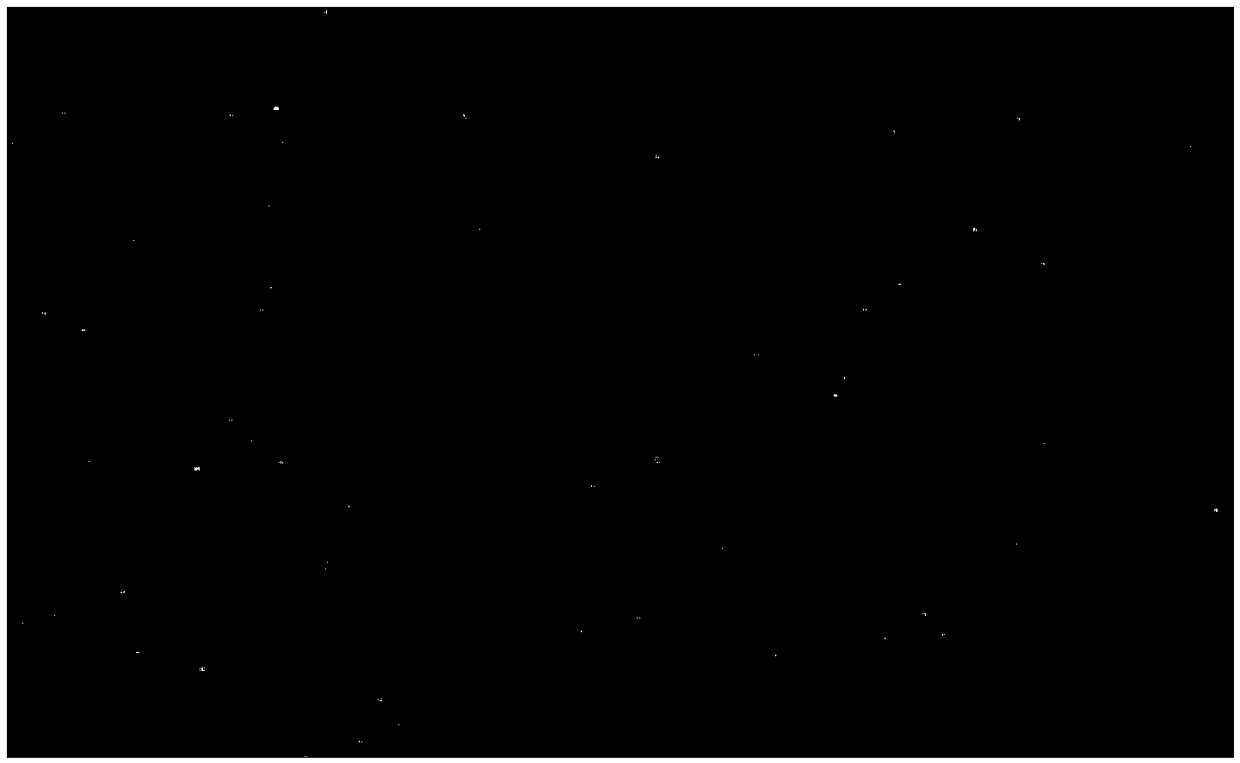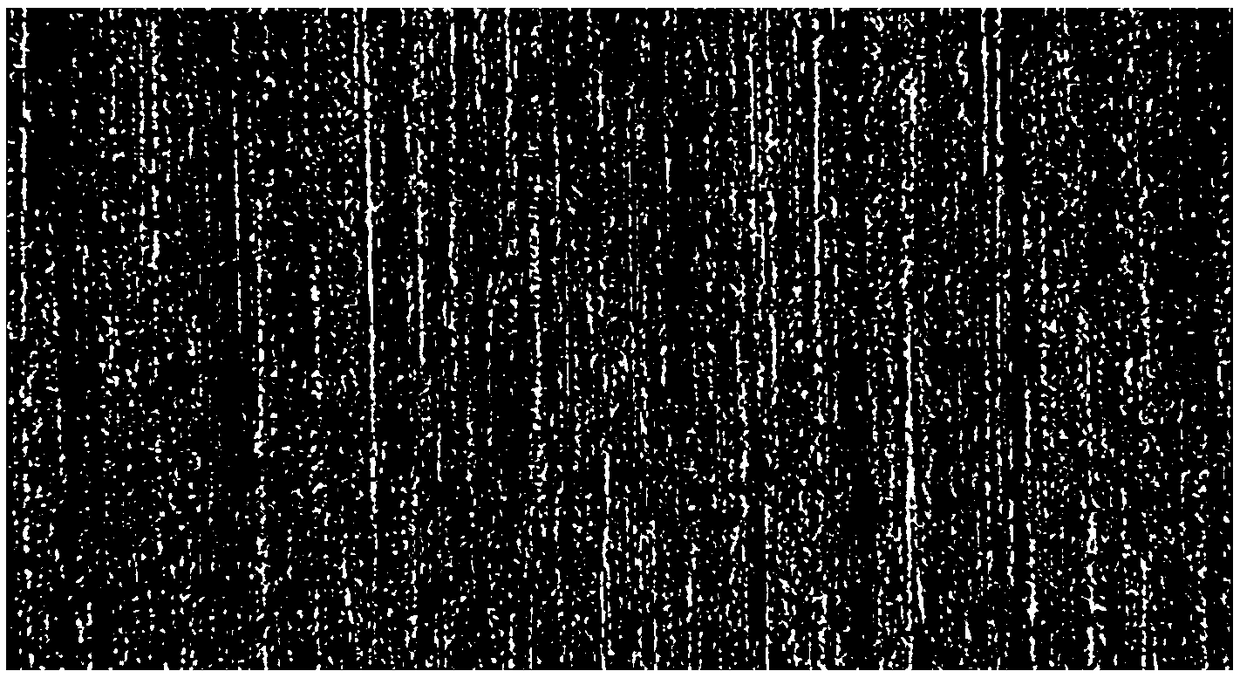Metal substrate surface treatment method for metal base copper-clad laminate
A metal substrate and surface treatment technology, which is applied in the secondary treatment of printed circuits, the improvement of the metal adhesion of insulating substrates, and electrical components, etc., can solve the problems of polluting the environment, easy tip discharge, and poor surface uniformity of metal substrates, etc., to achieve automation High degree, environmentally friendly process, improved adhesion and heat resistance
- Summary
- Abstract
- Description
- Claims
- Application Information
AI Technical Summary
Problems solved by technology
Method used
Image
Examples
Embodiment 1
[0026] This embodiment provides a method for surface treatment of an aluminum substrate for an aluminum-based copper-clad laminate, which specifically includes:
[0027] Step 1: Spray alcohol on the surface of the aluminum substrate by spraying and rinsing to clean the aluminum substrate, and then use compressed air to clean the residual alcohol on the surface; use spherical quartz sand with a particle size of 0.1mm and a Mohs hardness of 7.0, spray Sand blasting is performed perpendicular to the horizontal plane of the aluminum substrate, and the unit force value of the aluminum substrate subjected to the impact of the sand shot is 0.8kg / cm 2 , the sandblasting speed is 0.5m / min; the aluminum substrate that has been sandblasted is sprayed and cleaned with alcohol, and the alcohol is cleaned with compressed air after cleaning.
[0028] Step 2: Use spherical silicon carbide with a specific gravity of 3.0, a Mohs hardness of 9.5, and a particle size of 0.6 mm for the second sand...
Embodiment 2
[0034] The difference between this embodiment and Embodiment 1 is that in the first sandblasting, spherical quartz sand with a particle size of 0.12mm and a Mohs hardness of 7.3 is used, and the unit force value of the aluminum substrate subjected to the impact of the sand shot is 1.0kg / cm 2 , the sandblasting speed is 1m / min; in the second sandblasting, spherical silicon carbide with a specific gravity of 3.2, a Mohs hardness of 9.5, and a particle size of 1.0mm is used, and the unit force value of the aluminum substrate under the impact of the sand shot is 7kg / cm 2 , the sandblasting speed is 1m / min; the third sandblasting uses spherical quartz sand with a particle size of 0.25mm and a Mohs hardness of 7.3, and the unit force value of the aluminum substrate to withstand the impact of the sand shot is 3.5kg / cm 2 , the blasting speed is 1m / min.
[0035] The strengthening agent is a mixture of hydroxyethyl methacrylate and hydroxypropyl methacrylate at a weight ratio of 1:1, an...
Embodiment 3
[0039] The difference between this embodiment and Embodiment 1 is that in the first sandblasting, spherical quartz sand with a particle size of 0.11mm and a Mohs hardness of 7.1 is used, and the unit force value of the aluminum substrate subjected to the impact of the sand shot is 0.9kg / cm2 , the sandblasting speed is 0.8m / min; in the second sandblasting, spherical silicon carbide with a specific gravity of 3.1, a Mohs hardness of 9.4, and a particle size of 0.8mm is used, and the unit force value of the aluminum substrate under the impact of the sand shot is 6.5kg / cm 2 , the sandblasting speed is 0.8m / min; the third sandblasting uses spherical quartz sand with a particle size of 0.23mm and a Mohs hardness of 7.1, and the unit force value of the aluminum substrate under the impact of the sand shot is 3.2kg / cm 2 , the blasting speed is 0.8m / min.
[0040] As the reinforcing agent, choose a mixture of hydroxyethyl methacrylate and hydroxypropyl methacrylate at a weight ratio of 1:...
PUM
| Property | Measurement | Unit |
|---|---|---|
| particle diameter | aaaaa | aaaaa |
| particle diameter | aaaaa | aaaaa |
| particle diameter | aaaaa | aaaaa |
Abstract
Description
Claims
Application Information
 Login to View More
Login to View More - R&D
- Intellectual Property
- Life Sciences
- Materials
- Tech Scout
- Unparalleled Data Quality
- Higher Quality Content
- 60% Fewer Hallucinations
Browse by: Latest US Patents, China's latest patents, Technical Efficacy Thesaurus, Application Domain, Technology Topic, Popular Technical Reports.
© 2025 PatSnap. All rights reserved.Legal|Privacy policy|Modern Slavery Act Transparency Statement|Sitemap|About US| Contact US: help@patsnap.com


